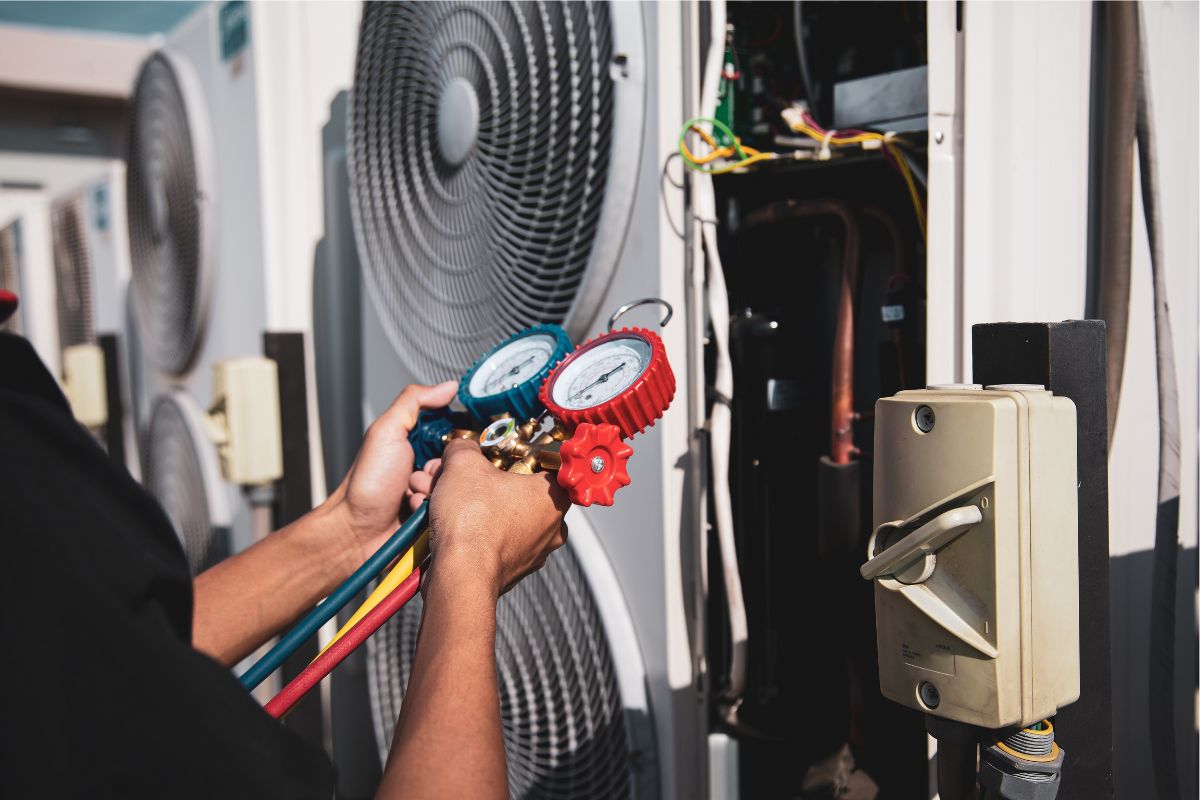When selecting an energy-efficient HVAC system for your home or business, understanding SEER ratings is key. SEER stands for Seasonal Energy Efficiency Ratio and it’s a calculation of how efficiently the appliance regulates temperature using energy over a season. It’s important to consider not only efficiency when making your decision but also cost, comfort, reliability and other factors that are unique to you as the consumer. In this post we’ll provide information about SEER ratings – what they are, why you should care about them, and tips for picking the best system for you. Keep reading to learn more about our comprehensive guide on deciphering SEER ratings!
Seasonal Energy Efficiency Ratio (SEER) ratings and how they work

Many homeowners are familiar with traditional measures of air conditioning efficiency, such as BTUs and EER ratings. However, the introduction of SEER ratings has brought increased transparency and accuracy to the evaluation of cooling systems. SEER, or seasonal energy efficiency ratio, reflects the cooling output of an air conditioner over an entire season, rather than just a single moment.
Essentially, the higher the SEER rating, the more efficiently the unit will operate over time. For those in the market for a new air conditioning system, understanding SEER ratings can help provide insight into potential energy savings and long-term cost effectiveness.
Benefits of high SEER ratings for your home
When it comes to home comfort, ensuring that your cooling system is energy-efficient is crucial. That’s where high SEER ratings come into play.
The higher your SEER rating, the more efficient your system is. A higher SEER rating means lower energy bills, more consistent cooling, and a reduced carbon footprint. Plus, many high-SEER systems come with features like variable speed fans, making them even smarter, quieter, and more energy-efficient. Investing in a high-SEER cooling system is an investment in both your home’s comfort and your wallet’s well-being.
Understanding SEER numbers
When it comes to understanding the energy efficiency of your HVAC unit, SEER numbers are an essential factor to consider. SEER ratings measure your air conditioner’s cooling output divided by the amount of energy used over an entire cooling season. Essentially, the higher the SEER rating, the more efficient your unit is, resulting in lower energy costs and a smaller carbon footprint.
Investing in a high-efficiency air conditioner with an excellent SEER rating may seem like a considerable expense initially, but it can save you a significant amount of money in the long run. Therefore, understanding SEER numbers is crucial for making informed decisions about the HVAC system in your home or office.
What to consider when purchasing a unit with a high SEER rating
When it comes to purchasing a new HVAC unit, there are many things to consider. One important factor to keep in mind is the SEER rating — with higher ratings indicating more efficiency. However, buying a unit with a high SEER rating isn’t always the best choice for everyone. Consider factors such as the climate in your area, the size of your home, and your budget before making a decision. Consulting with a professional HVAC technician can also help you make an informed choice that will keep your home comfortable and energy-efficient for years to come.
Tips on improving the SEER rating of your home
If you’re on the hunt for ways to improve the energy efficiency of your home, look no further than your HVAC system. As previously stated, the higher the SEER rating, the more energy efficient your system is (generally) — which can translate to lower energy bills and a smaller environmental footprint. So, what can you do to boost your SEER rating? First, make sure your system is properly maintained and cleaned regularly. Additionally, consider upgrading to a more modern and energy-efficient system with a higher SEER rating. These simple steps can make a big difference in your home’s energy efficiency and your wallet.
Key takeaways on SEER ratings and their impact on your home’s energy efficiency
SEER ratings are an important aspect to consider when looking to make your home more energy efficient. SEER, or Seasonal Energy Efficiency Ratio, measures the efficiency of air conditioning units. The higher the SEER rating, the more energy efficient the unit is. In turn, this leads to lower energy bills and a more comfortable home. It’s important to note that while higher SEER ratings can come with a higher initial cost, the long term savings on energy bills often make it a worthwhile investment. Additionally, many utilities offer rebates for high SEER-rated units, making it an even more attractive option. Overall, understanding SEER ratings is essential when looking to upgrade your home’s air conditioning system and improve your energy efficiency.
To sum up, having an understanding of SEER ratings is beneficial for homeowners looking to improve their energy efficiency. A high SEER rating indicates a more efficient product which can lead to long-term savings on energy cost. Additionally, choosing a unit with the appropriate size and features that meet the needs of your home is essential in making sure your system will work best. Finally, proper installation, regular maintenance, and utilizing strategies such as closing curtains during peak hours are all viable methods you can use to increase your home’s SEER rating and reduce your overall energy expenditure. By considering all the points discussed in this post, you can rest assured that you have all the information necessary to make informed decisions when it comes to buying and maintaining a higher-efficiency unit for your home.
If you’re confused about SEER ratings or are looking to improve your home’s energy efficiency, Air Ideal is the place to call! With expert technicians ready, willing, and able to help, Air Ideal can clarify all of your HVAC concerns and needs. To learn more about our offerings, please visit our website and contact us today for more!



